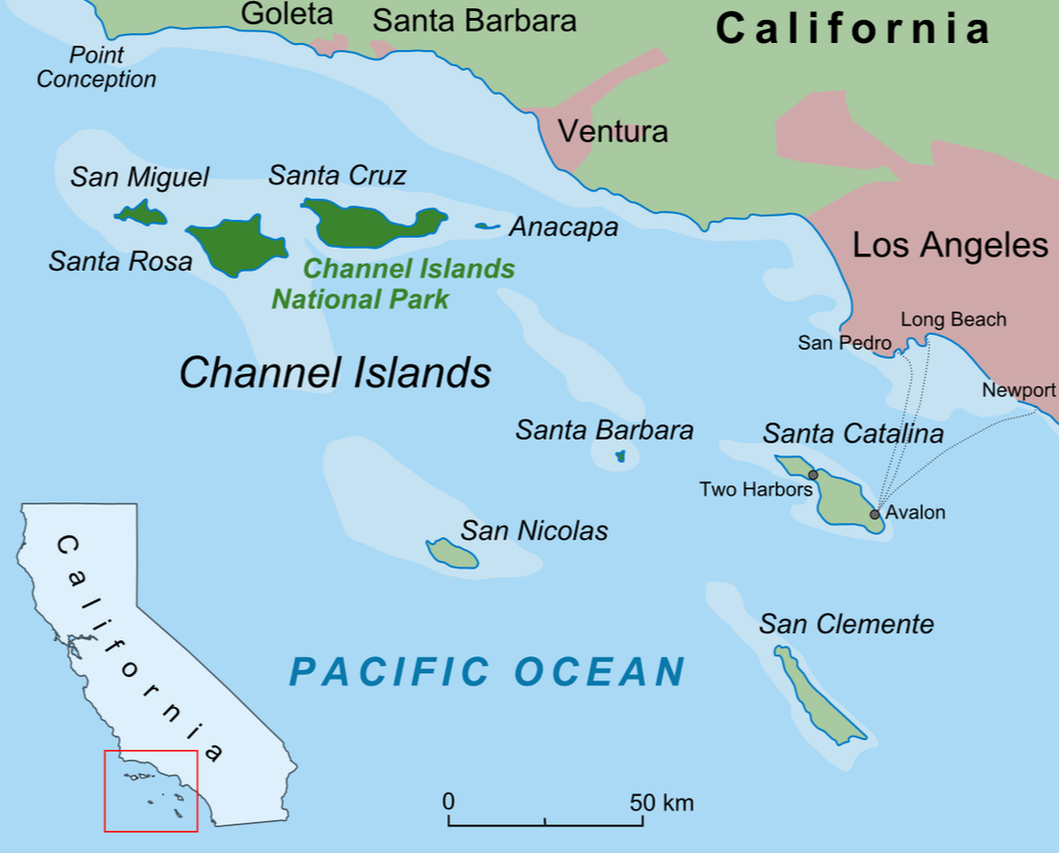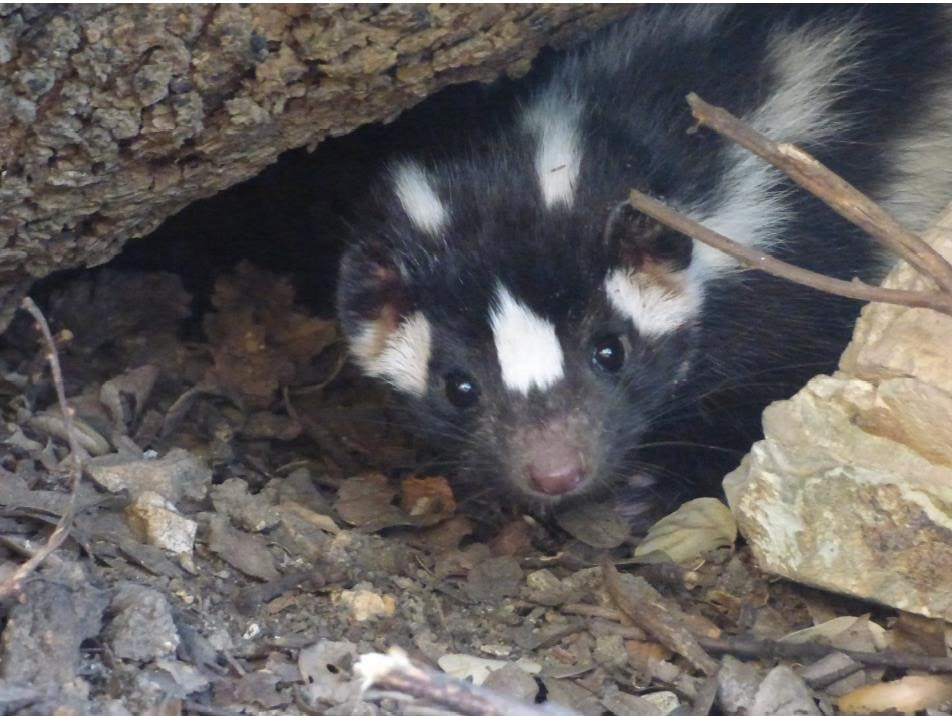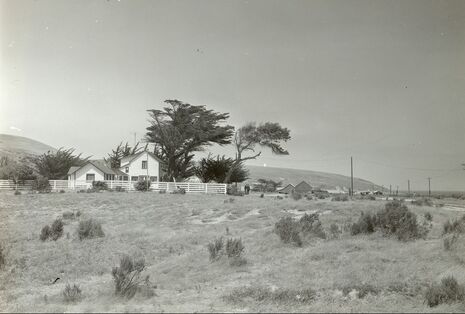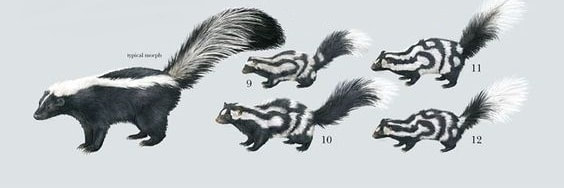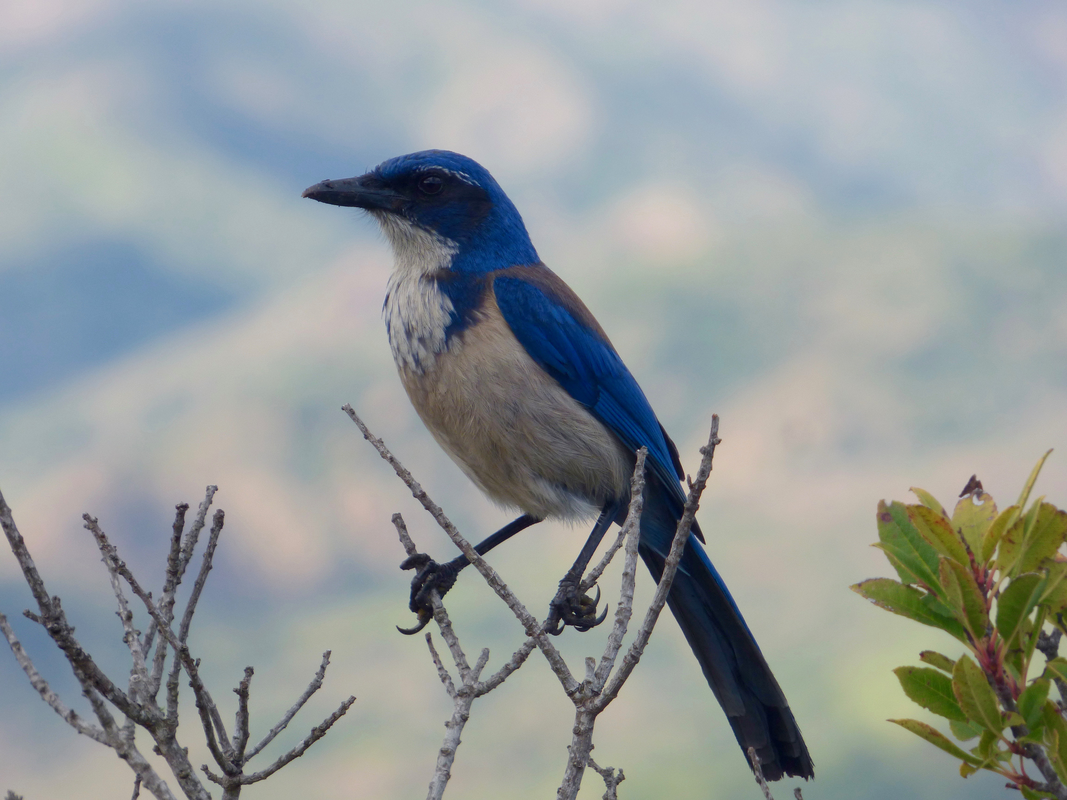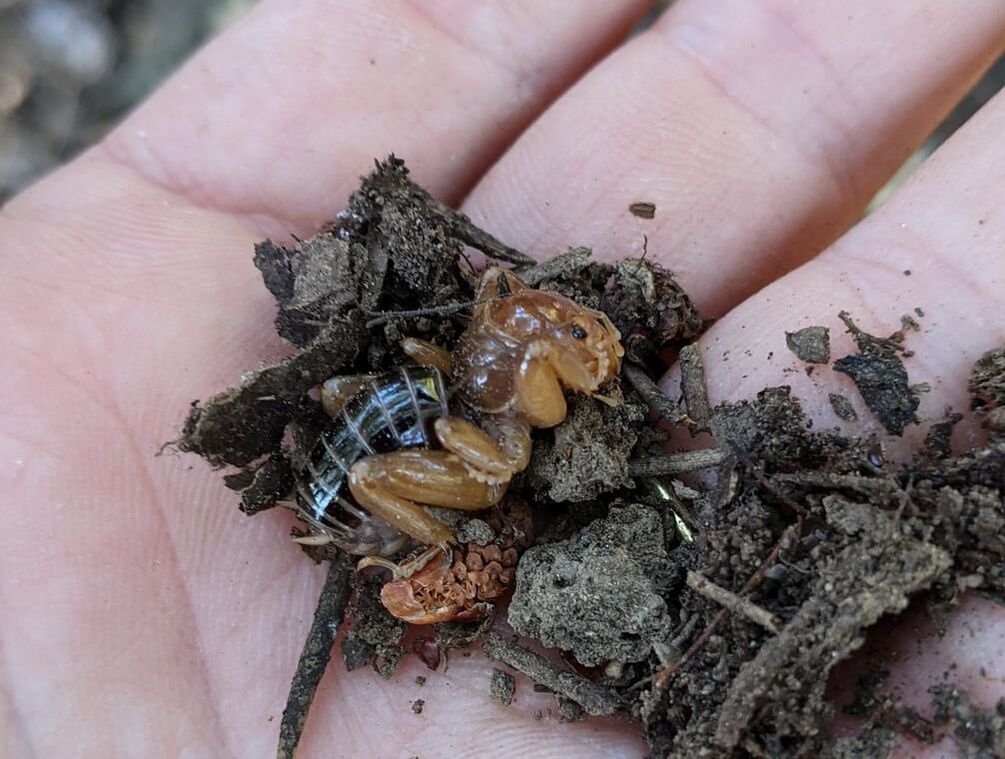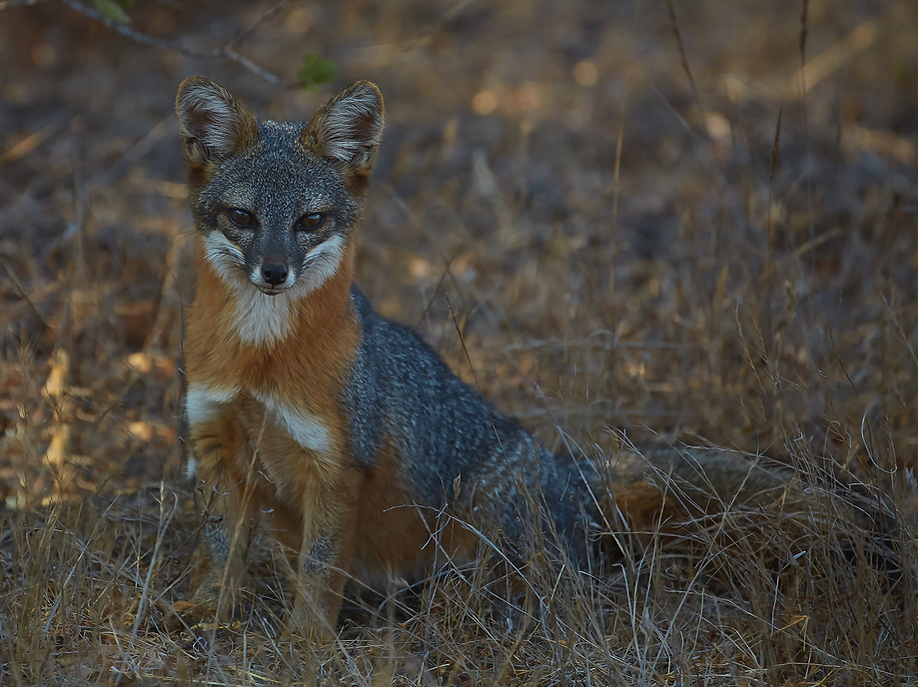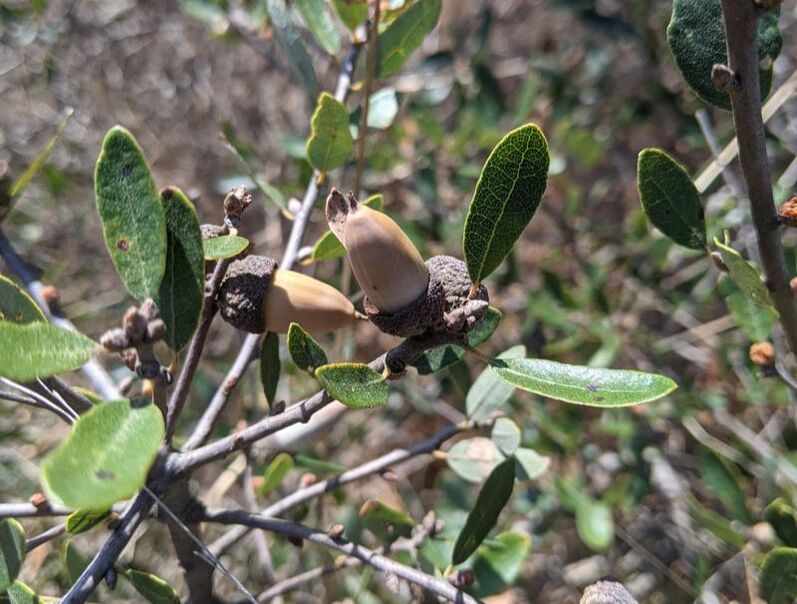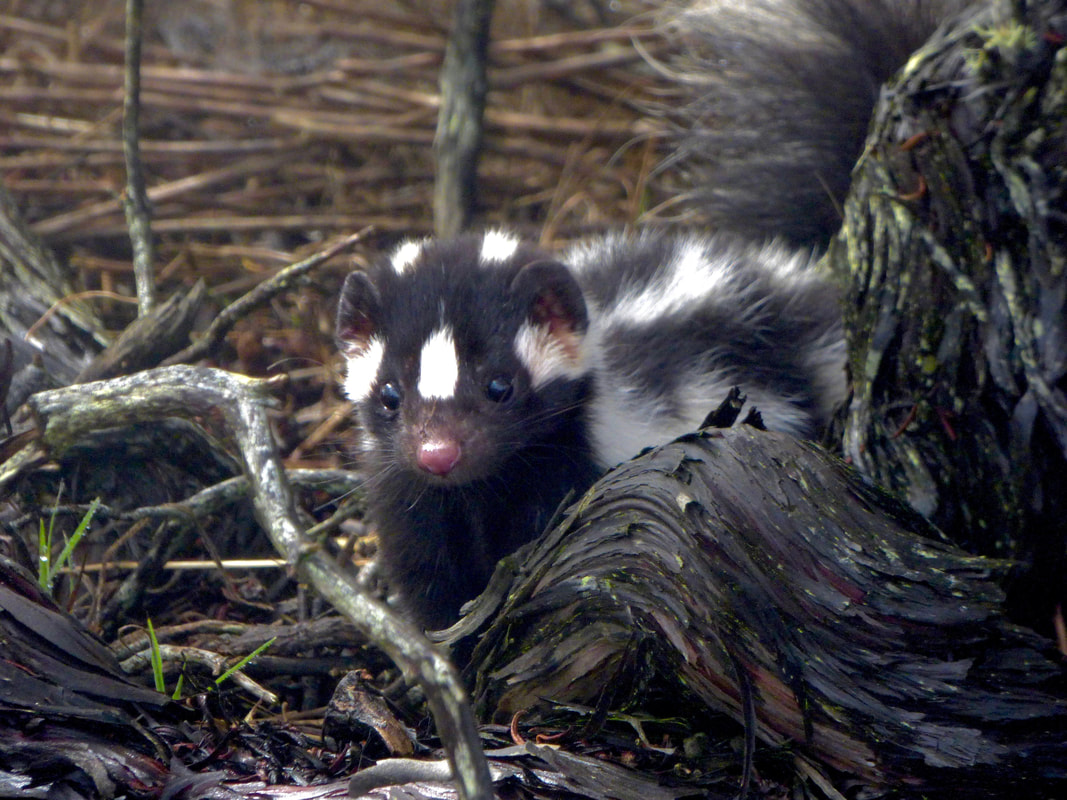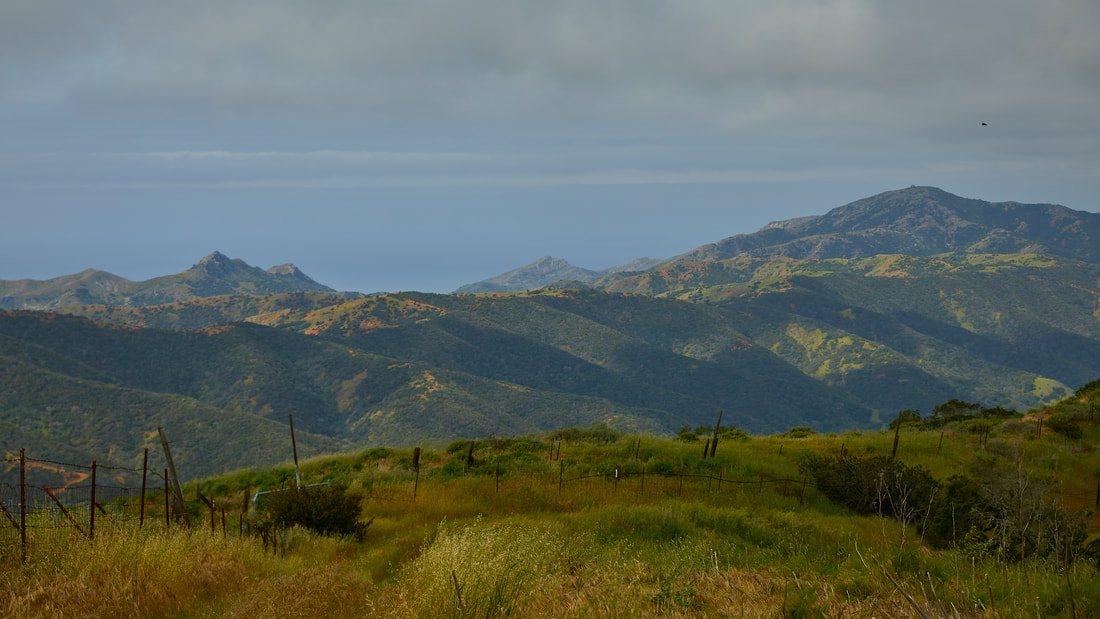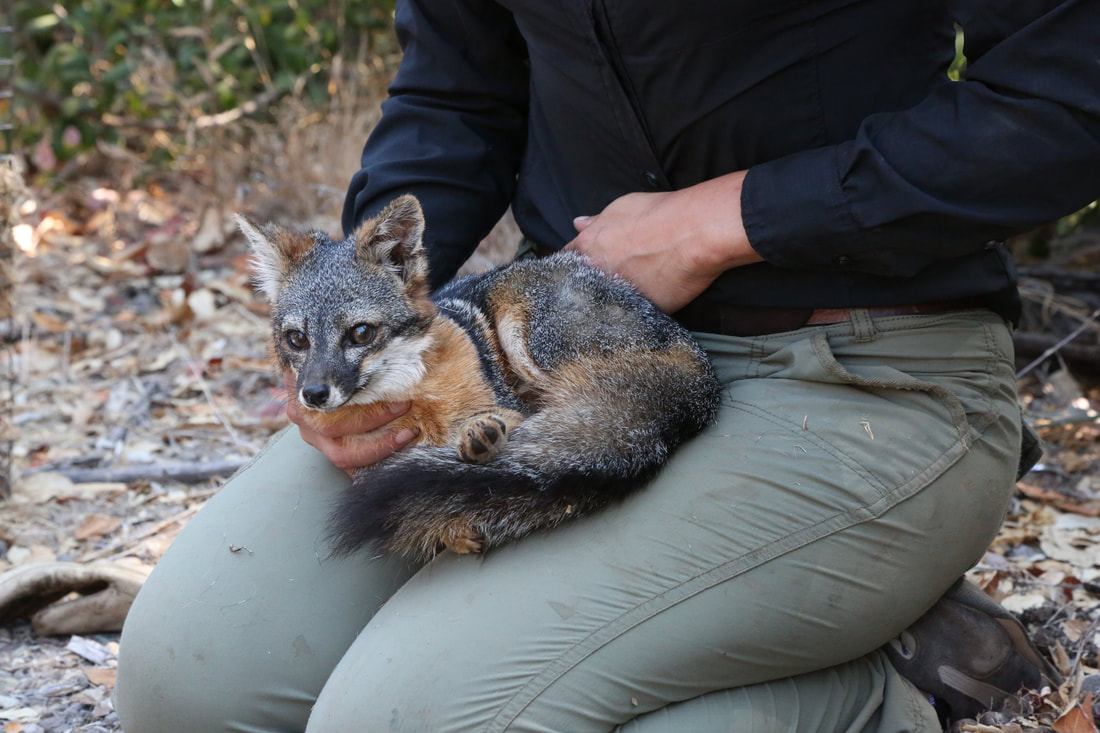Geographic RangeIsland spotted skunks (Spilogale gracilis amphiala) are small carnivores that live only on Santa Cruz and Santa Rosa, two islands in the Channel Islands archipelago off the coast of California, USA. These striking, yet cryptic mammals may have also lived on nearby San Miguel Island, but haven't been seen there since the late 19th century.
Spotted skunks probably colonized the Channel Islands over 9,000 years ago, when the sea level was lower than it is today. Back then, Santa Cruz, Santa Rosa, San Miguel, and Anacapa Islands were connected, forming a super-island called Santarosae. Scientists aren't sure how spotted skunks first reached Santarosae Island. Humans might have brought them over on purpose thousands of years ago, or perhaps they drifted over from the mainland accidentally on debris after a storm. It seems unlikely that a tiny mammal could cross 6 or more miles of open ocean, but a single pregnant female skunk carried on a raft of vegetation would have been enough to start a new population on Santarosae. Beginning in the 1850s, wildlife habitats on Santa Cruz and Santa Rosa islands were affected by intensive ranching, feral pigs, and introduced deer. But spotted skunks clung to existence on these islands, likely retreating to small patches of habitat that remained in steep, remote canyons. By the mid-2000s, livestock and big game mammals had been removed from all three islands. Native vegetation and wildlife (like the island fox) began to recover. But for reasons scientists don't fully understand, island spotted skunks seem to be about as rare as they were in the early 1990s, when sheep, pigs, and deer still roamed the denuded islands. |
Natural History
|
Spotted skunks are much smaller and more elusive than other, more familiar skunk species, like the striped skunk. Island spotted skunks only weigh between 400 - 800 grams (less than 2 pounds), while striped skunks may weigh up to 5 kg (or 11 pounds). When in danger, spotted skunks release an acrid scent that deters predators - but most people think it's not as pungent as a striped skunk's spray.
|
|
Island spotted skunks mostly eat deer mice and insects like Jerusalem crickets. Recent studies have shown that island spotted skunks prefer habitats with dense vegetation and steep terrain, which may help them avoid their close competitor, the island fox. Island spotted skunks can dig their own dens, or use rock piles, hollow logs, tree roots, and other structures as homes.
Island spotted skunks are difficult to study, and not much is known about their breeding habits, population structure, or interactions with other endemic island species. |
Population StatusThe island spotted skunk might be one of the world's rarest carnivores. The entire population is restricted to two California Channel Islands with a combined area of less than 500 km². Their exact population size is uncertain, but in 2020, biologists estimated that there were fewer than 1,000 individual island spotted skunks in the wild. During recent biological surveys, skunk trapping success was between 1 - 4%. Island spotted skunks are currently listed as a Subspecies of Special Concern by the California Department of Fish and Wildlife.
|
Potential Threats
|
Island spotted skunks occur entirely on protected land owned by the National Park Service and The Nature Conservancy. However, because of their restricted range, island spotted skunks are still vulnerable to environmental events like wildfire and drought. Their limited genetic variability may also make them susceptible to infectious disease.
Other potential threats to island spotted skunks are not well understood. Although island vegetation has recovered substantially in the last 20 years, some changes caused by human land-use are persistent. Erosion, invasive annual grasses, and climate change have and will continue to alter the island landscape, including areas of critical skunk habitat. Competition with island foxes may also have contributed to apparent skunk declines in the past several years. Between 2000 - 2010, when island foxes were very rare, skunk populations appeared to increase dramatically. Now that fox populations have recovered on both islands, skunks aren’t seen as often during surveys. Future management actions will focus on maintaining the conditions that allowed these two endemic carnivores to coexist for at least 7,000 years. |
|
